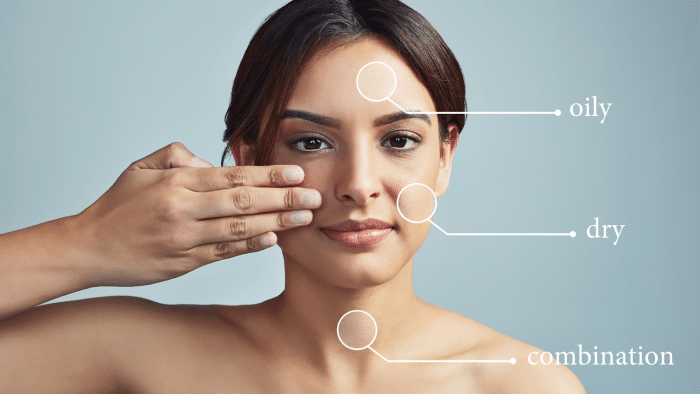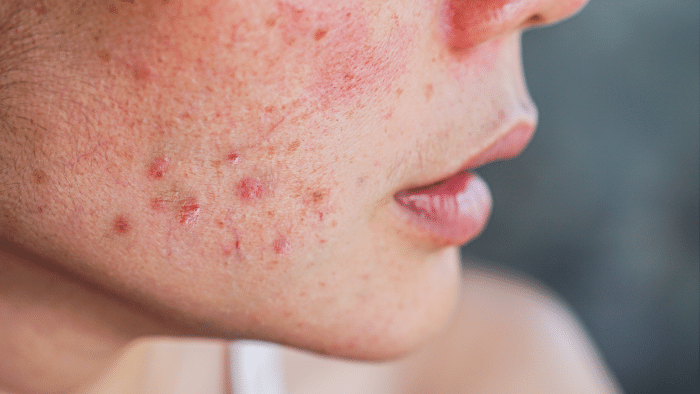Only for Licensed Professionals
Only for Licensed Professionals

Personalizing Your Routine: Tailoring Biorepeel Application to Your Skin Type
Nina Petrovic
Last Updated On: June 21, 2024
The American Academy of Dermatology states that about 90% of people who develop melasma are women. It may be due to the typical causes of these conditions, like sun exposure and hormonal changes.
Either way, choosing the proper treatment can alleviate the concern. Biorepeel is one of the top options, ensuring clients get the rejuvenation they need across different skin types.
In this article, we’ll explain how you can customize Biorepeel based on specific skin types to enhance safety and effectiveness.
Key Takeaways
- Different skin types require specific Biorepeel application techniques to maximize effectiveness and minimize potential irritation.
- Consulting with a skincare professional is crucial before starting Biorepeel treatments to get tailored advice for specific needs and goals.
- The amount of Biorepeel solution used, the duration of application, and the personalized post-treatment routine vary depending on unique skin type.
- Side effects like redness and peeling from Biorepeel treatments are manageable by using gentle moisturizers, sunscreen protection, staying hydrated, and avoiding harsh chemicals and extreme temperatures.
- Sensitive skin or individuals with underlying conditions need special attention when using Biorepeel to ensure safety without compromising desired outcomes.
Understanding Your Skin Type

Having a precise grasp of skin type helps optimize Biorepeel for melasma. This way, medical professionals can cater to specific needs and characteristics for maximum effectiveness.
- Normal Skin: This usually maintains a good balance of moisture, oil production, and durability, making it more comfortable with different treatments.
- Oily Skin: People with oily skin deal with the overproduction of sebum, requiring them to take measures that control oil and clear pores.
- Dry Skin: Those with dry skin struggle with a lack of moisture, requiring them to focus on techniques that replenish and lock moisture within the skin.
- Combination Skin: This skin type is challenging because it demands an approach that addresses the distinct needs of each area, usually mixing oily and dry skin requirements.
Importance of Tailoring Biorepeel Application
Understanding the necessity of customizing Biorepeel serum application is pivotal to maximizing its benefits and compatibility with each skin type. This way, it creates a more effective and individualized approach.
How Different Skin Types React to Biorepeel Treatment
Biorepeel’s innovative formula caters to various skin needs, ensuring a tailored approach to skin rejuvenation. It leverages natural components to exfoliate and regenerate, making it compatible with diverse skin profiles.
Normal Skin
- Exhibits a balanced reaction that accepts the treatment evenly
- Typically shows minimal irritation, recovers quickly, and allows regular intervals
Oily Skin
- May experience a reduction in excess sebum production post-treatment
- Often tolerates frequent applications due to increased resilience against irritation
Dry Skin
- Gains hydration and improved texture from Biorepeel’s nourishing properties
- Requires careful monitoring for over-drying
- Usually works best with a less frequent treatment schedule
Combination Skin
- Benefits from Biorepeel’s ability to address varied areas differently according to specific needs
- Requires adaptable application strategies that focus on particular regions and concerns
Advantages of Personalized Treatment
Personalized treatment plans are crucial since they ensure the approach addresses each client’s unique concerns. Moreover, it can boost the effectiveness of Biorepeel after administration.
Customization in skincare allows clients to receive the precise concentration and duration of the application according to their needs. It amplifies the results and minimizes potential adverse effects.
At the same time, it translates into greater holistic well-being for clients. So, it fosters a sense of satisfaction knowing medical professionals target their specific issues with attention to detail.
Personalizing Biorepeel Application to Different Skin Types
Understanding the nuances of personalized Biorepeel serum application is crucial for achieving optimal results tailored to specific skin types. It also uncovers a precise approach for each individual’s needs, enhancing treatment efficacy and overall skin health.
Amount of Solution to Use
Knowing the correct amount of Biorepeel for an application is necessary based on the client’s concerns. For example, oily skin may require more, while sensitive and dry skin benefits from a conservative approach with less product.
Other factors affecting the amount of required Biorepeel for melasma include skin thickness, tolerance levels, and desired outcomes.
Recommended Duration of Application
The recommended duration for effective Biorepeel after-effects is five to ten minutes. It allows enough time for the peel to penetrate and work without overexposing the skin.
Some medical professionals may conduct repeat treatments every two weeks to maintain the frequency until they achieve the desired effect. The ideal range is usually three to six sessions.
Post-treatment Aftercare Routine
Tailoring the post-treatment aftercare routine to each client’s skin type supports the healing process, reduces side effects, and helps achieve optimal results.
- Clients with normal skin should maintain hydration and protect themselves from UV exposure.
- Individuals with oily skin can use non-comedogenic moisturizers and gentle cleansers to avoid triggering excess sebum production.
- Those with dry skin should use intensive hydrating creams or serums to boost moisture retention.
- Clients with combination skin must apply lightweight, non-greasy moisturizers to balance moisture levels without causing breakouts.
- Avoiding direct sunlight immediately after receiving a Biorepeel serum treatment is critical.
- It’s best to steer clear of harsh chemicals or abrasive exfoliants.
- Lifestyle adjustments may be required, such as staying hydrated and getting adequate rest.
Managing Potential Side Effects

Understanding the nuances of Biorepeel’s influence on different skin types aids in predicting and managing potential side effects effectively. Proactive measures tailored to individual skin responses ensure a smoother recovery process post-treatment.
Redness and Peeling for Each Skin Type
Biorepeel serum treatments can lead to skin redness and peeling, which vary across different skin types. Tailoring the procedure minimizes these reactions and enhances the overall experience.
- Normal Skin: Mild redness can occur post-treatment with minimal peeling that can resolve with proper hydration.
- Oily Skin: This skin type exhibits more resilience with Biorepeel application but can lead to excessive oil production. Redness occurs, but subsidies quickly.
- Dry Skin: Pronounced redness and peeling are expected due to lacking natural oils, requiring clients to nourish the skin effectively.
- Combination Skin: Redness might show less on oily areas, and peeling often appears in drier parts. Regional application techniques manage these responses.
Tips for Managing Side Effects
Side effects from Biorepeel for melasma are common. Adhering to appropriate management practices is critical for comforting the skin and enhancing recovery.
- Apply a gentle, hypoallergenic moisturizer to soothe irritated skin.
- Use a broad-spectrum sunscreen with an SPF of 30 or higher daily to protect skin from UV damage.
- Stay hydrated by drinking plenty of water and maintaining the skin’s moisture balance.
- Avoid harsh chemicals, including skincare products containing retinol or similar ingredients.
- Refrain from picking at peeling skin to avoid scarring. Instead, allow the skin to shed naturally.
- Limit exposure to extreme temperatures, from hot to cold.
Consulting a Skincare Professional
Consulting a skincare professional is pivotal for those interested in incorporating Biorepeel into their regimen, especially when it considers individual skin concerns and overall health.
Their expertise is essential in customizing the treatment to each unique complexion. So, it ensures safety and effectiveness while navigating the intricacies of each need.
Importance of Professional Consultation
Seeking advice from a skincare professional before using Biorepeel for melasma is essential to tailor the treatment precisely to unique skin characteristics. These experts evaluate skin type, consider genetic factors, and examine environmental conditions.
With their specialized knowledge, they can adjust the application technique, frequency, and aftercare recommendations for optimal results. Working closely with a dermatologist or esthetician also ensures the treatment addresses underlying skin conditions properly before proceeding.
Particularly Important for Sensitive Skin or Underlying Skin Conditions
Careful consideration is paramount for clients with sensitive skin or preexisting conditions when incorporating a Biorepeel serum into skin care. They may experience heightened sensitivity to the active ingredients in the peel, potentially leading to exacerbated symptoms or adverse reactions.
Healthcare professionals must thoroughly evaluate a client’s skin health and discuss potential risks associated with Biorepeel treatments. Establishing a meticulous post-treatment routine is also essential in maintaining the results without compromising skin health.
About: Operating since 2016, Med Supply Solutions stands out as a leading supplier of under eye and lip fillers, including essential information on how long does biorepeel last. Through competitive pricing strategies, they empower medical practices to enhance profitability and resource management effectively. Additionally, each client benefits from a dedicated VIP sales agent, ensuring a seamless shopping experience while providing access to enduring biorepeel results for impressive and long-lasting body contouring effects at a great price.
FAQs
1. What is Biorepeel, and what does it do for my skin?
Biorepeel is a chemical peel that helps rejuvenate your skin by removing dead cells and promoting new cell growth.
2. Can I use Biorepeel on sensitive skin?
Yes, you can use Biorepeel on sensitive skin, but choose the suitable formulation for your specific skin type.
3. How often should I apply Biorepeel to my face?
The frequency of applying Biorepeel depends on your skin type and condition.
4. Will using Biorepeel make my oily skin less greasy?
Biorepeel can help balance oil production in oily skin types when used as part of a tailored skincare routine.
5. Is there downtime after applying Biorepeel?
Depending on how your skin reacts, there may be minimal downtime after using Biorepeel as the peeling process occurs.
References
Litman, T. Personalized medicine—concepts, technologies, and applications in inflammatory skin diseases. APMIS. https://www.ncbi.nlm.nih.gov/pmc/articles/PMC6851586/. Published May 24, 2019.
Mathur, S. and Sutton, J. Personalized medicine could transform healthcare. Biomedical Reports. https://www.ncbi.nlm.nih.gov/pmc/articles/PMC5492710/. Published June 2, 2017.
Products
Cart
Log In
Newsletter
Subscribe for exclusive offers and updates on new arrivals
Share feedback at:
Working Hours
MON - SUN 9AM to 6PM EST
The Most Popular Brands
Med Supply Solutions
Support
Secure checkout is guaranteed with full adherence to PCI DSS payment standards.
Products listed here are guaranteed authentic and manufacturer-sourced.
Pay easily with trusted providers


*Google and Apple Pay are currently only available via a direct link provided by your account manager.
Copyright 2025. Med Supply Solutions